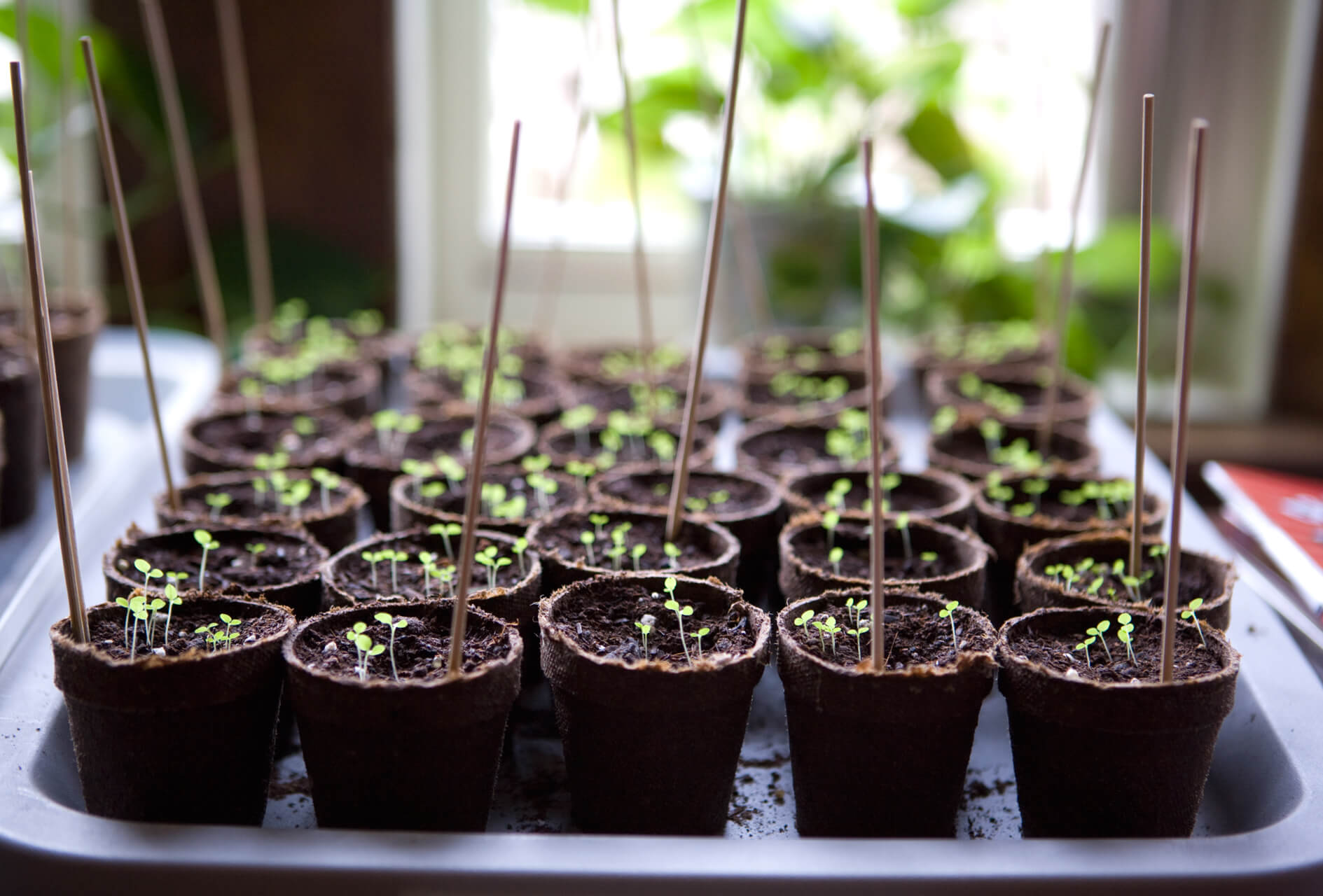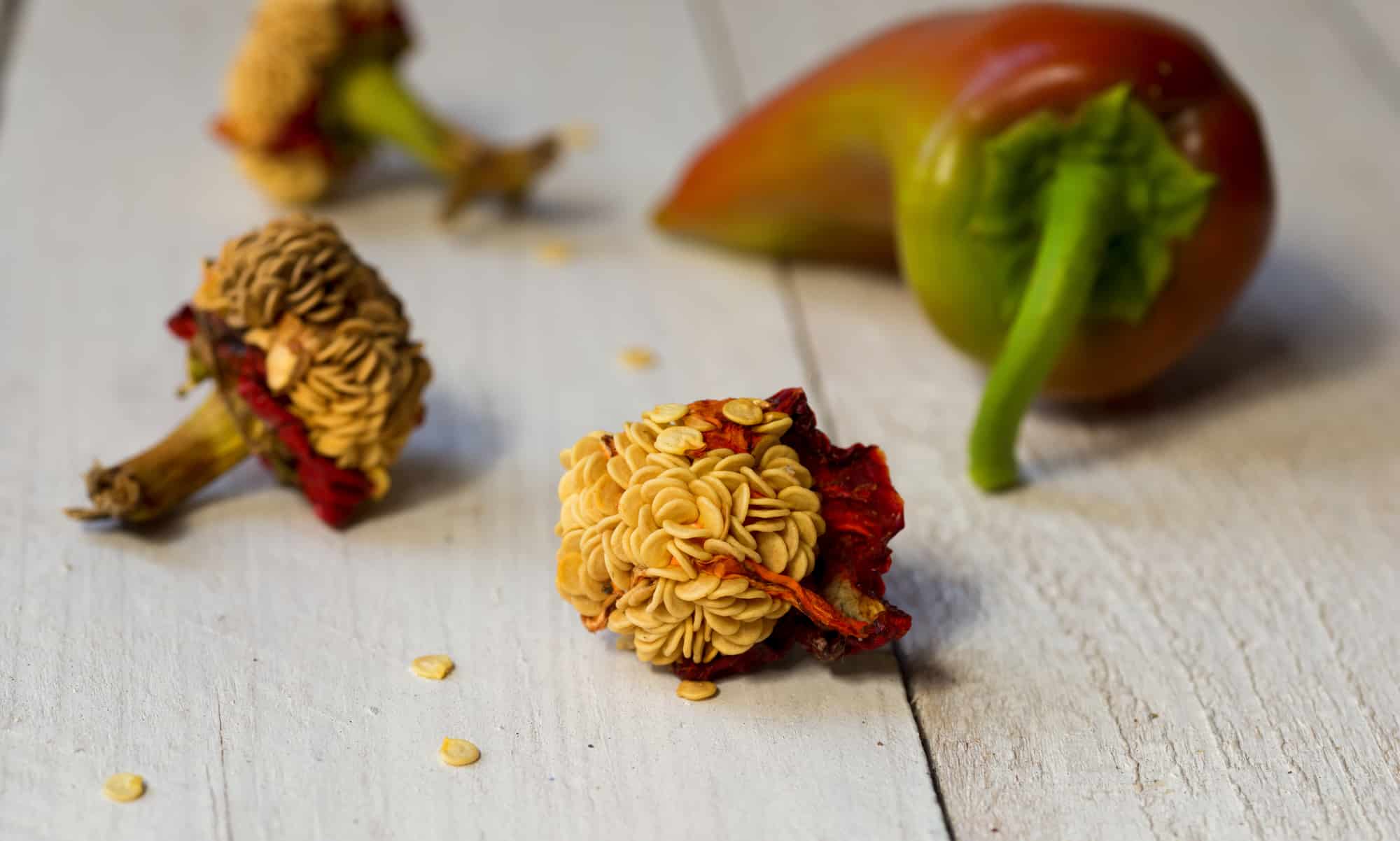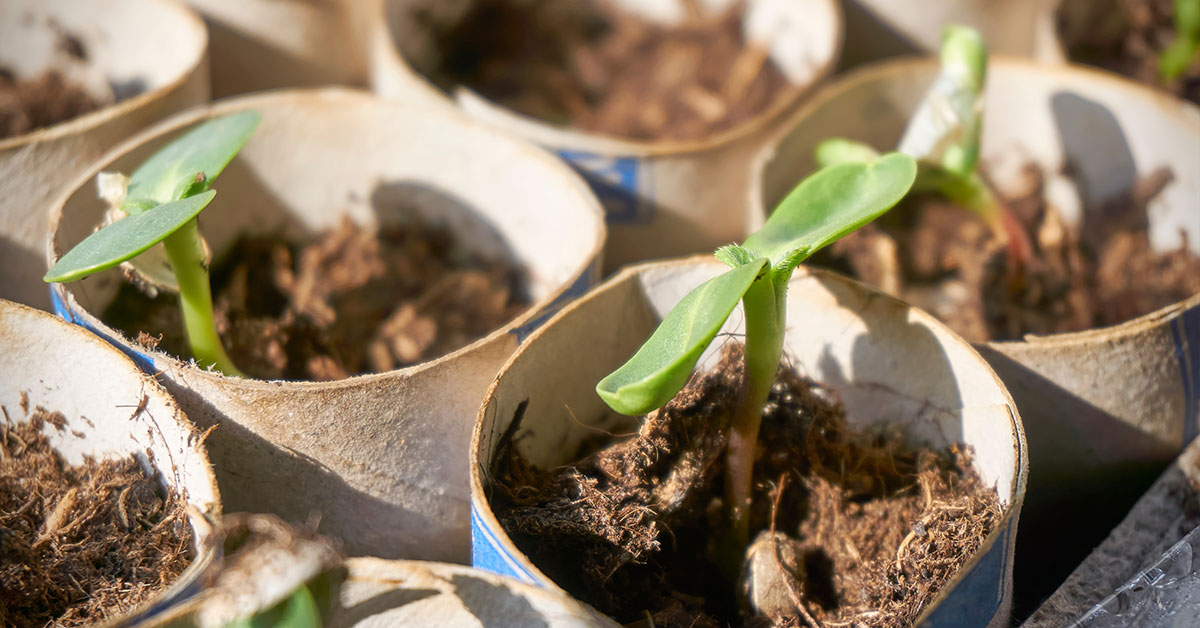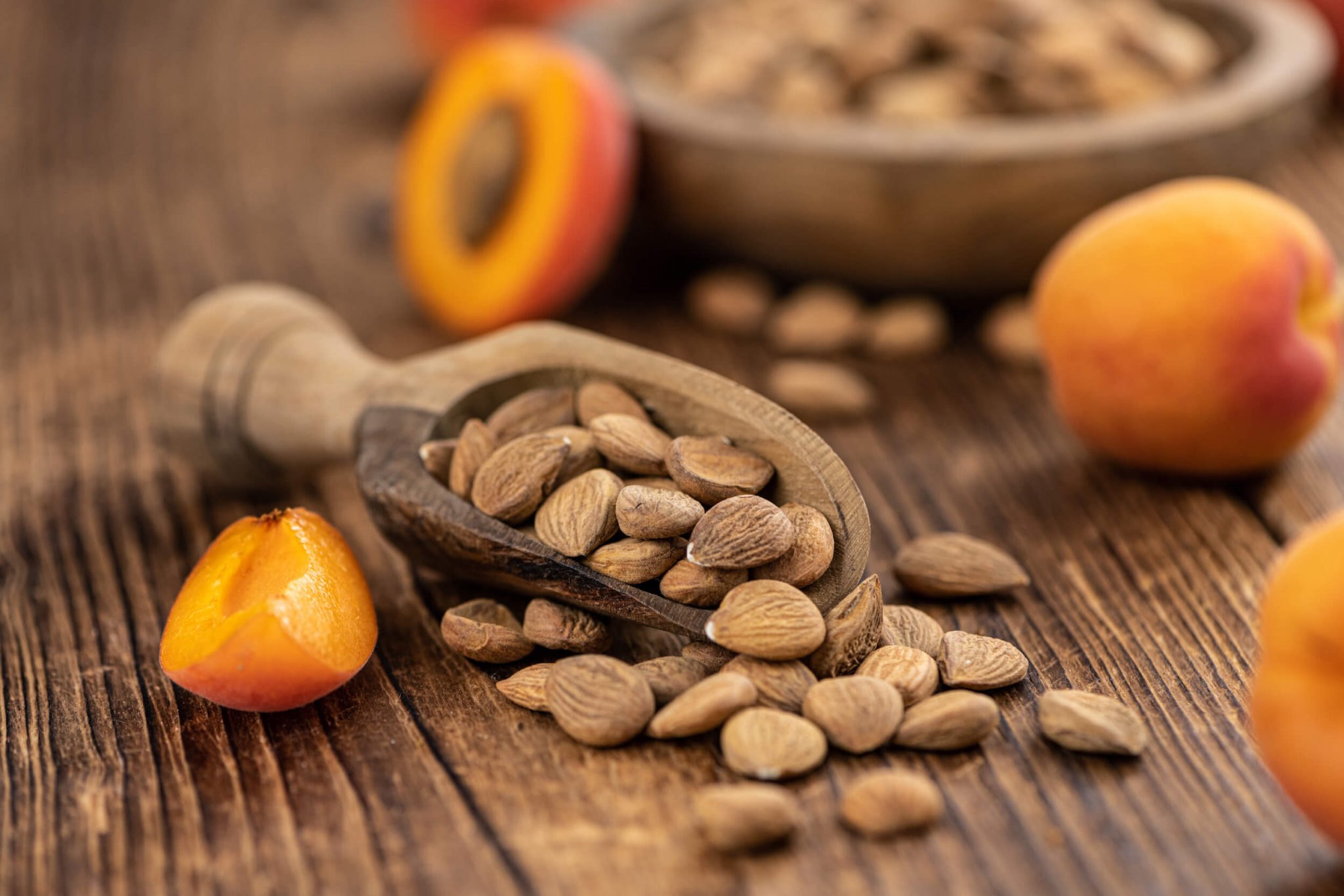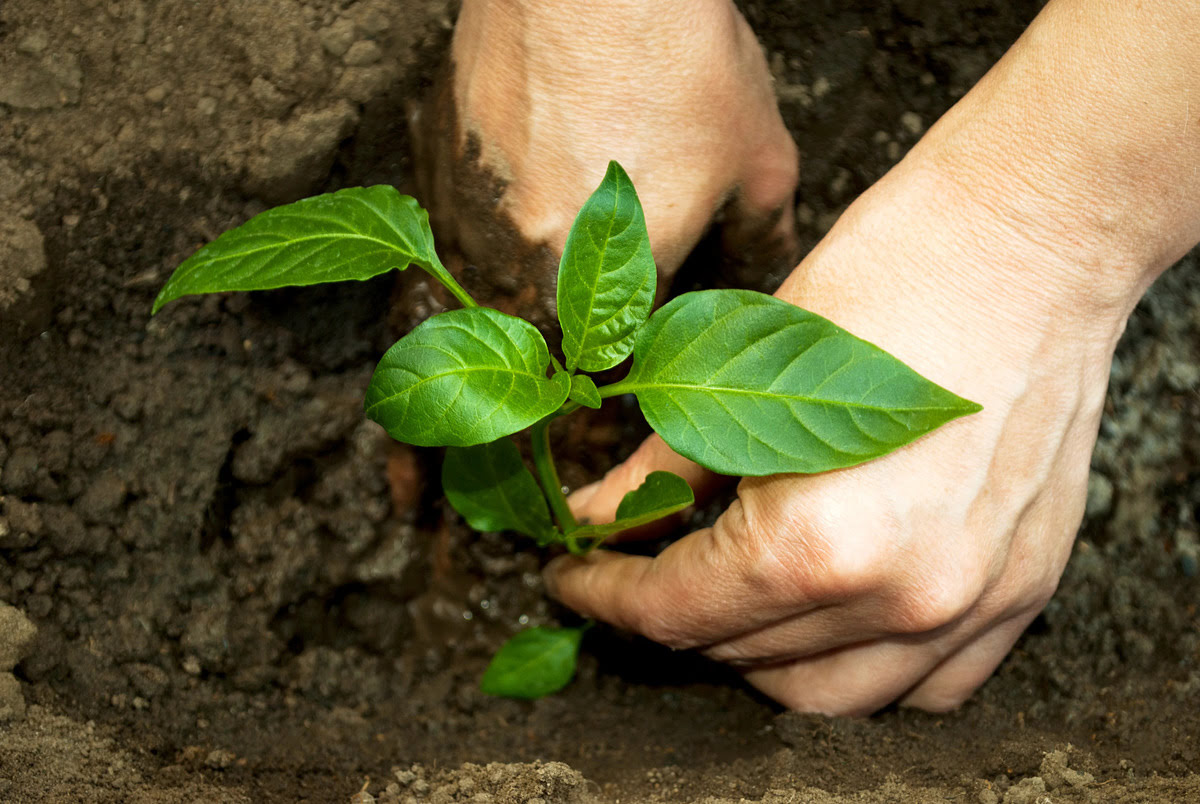Home>Types of Gardening>Edible Gardening>When Should I Plant Wildflower Seeds


Edible Gardening
When Should I Plant Wildflower Seeds
Modified: February 10, 2024
Learn the best time to plant wildflower seeds for a beautiful edible garden. Get expert tips and advice on edible gardening for a fruitful harvest.
(Many of the links in this article redirect to a specific reviewed product. Your purchase of these products through affiliate links helps to generate commission for Chicagolandgardening.com, at no extra cost. Learn more)
Table of Contents
Introduction
When it comes to planting wildflower seeds, timing is everything. The optimal time to plant these seeds depends on various factors such as temperature, weather conditions, soil quality, and the specific type of wildflower species you are planting. Whether you choose to sow seeds in the spring or fall, understanding the ideal planting time will greatly increase your chances of successful germination and vibrant blooms.
Wildflowers are not only beautiful and add a touch of natural charm to any landscape, but they also play a critical role in supporting pollinators like bees, butterflies, and hummingbirds. By creating a habitat for these beneficial creatures, you can contribute to the overall health of the environment and promote biodiversity in your garden.
In this article, we will explore the key factors to consider when determining the ideal time to plant wildflower seeds. By understanding the importance of temperature, weather conditions, soil quality, and regional climate, you can make informed decisions that will result in a successful wildflower garden.
Factors to Consider
Several factors play a crucial role in determining the optimal time for planting wildflower seeds. It’s important to consider these factors to ensure successful seed germination and healthy plant growth. The key factors to consider include temperature and weather conditions, soil conditions, local climate, and the specific type of wildflower seed you are planting.
Temperature and Weather: Wildflower seeds require certain temperature ranges to germinate effectively. The general rule of thumb is to plant when the soil temperature consistently stays above 50°F (10°C) for spring planting or below 75°F (24°C) for fall planting. It’s also essential to consider the current and forecasted weather conditions. Avoid planting during extreme heatwaves, prolonged droughts, or heavy rain periods, as these conditions can negatively affect seed germination and plant establishment.
Soil Conditions: Good soil preparation is vital for successful wildflower seed planting. The soil should be well-drained, free of weeds, and loosened up to allow for proper root development. Conduct a soil test to determine its pH level, fertility, and nutrient content. Most wildflowers prefer a slightly acidic to neutral pH range (around 6.0 to 7.5). If necessary, amend the soil with organic matter or adjust the pH level accordingly before sowing the seeds.
Local Climate: The climate of your region plays a significant role in determining the ideal planting time. Study your local climate patterns, including average temperatures, frost dates, and precipitation patterns. Some wildflowers thrive in colder climates, while others prefer warmer regions. Understanding your local climate will help you select wildflower species that are well-suited for your area and time your planting accordingly.
Seed Type and Species: Different wildflower species have unique requirements for optimal germination. Some seeds need a period of cold stratification, which mimics the natural winter conditions, to break their dormancy. Others may require scarification, a process that breaks down the seed coat to allow for water absorption. Research the specific requirements of the wildflower seeds you are planting to ensure you meet their needs for successful germination and growth.
Temperature and Weather
The temperature and weather conditions during the planting season have a significant impact on the successful germination and growth of wildflower seeds. It is essential to consider these factors and choose the optimal time for planting to maximize your chances of success.
Spring Planting: Spring planting is a popular choice for many gardeners as the soil begins to warm up after the winter frost. The ideal soil temperature for most wildflower seeds to germinate is between 60°F (15°C) and 70°F (21°C). Planting when the soil consistently reaches these temperatures ensures that the seeds have the warmth they need to initiate germination.
However, it is crucial to be mindful of any late frost dates in your region. Frost can damage or kill young seedlings, so it’s best to wait until after the last frost date before planting. You can consult local agricultural extension offices or gardening resources to determine the average last frost date in your area.
Fall Planting: Fall planting can also be a successful option for wildflower seeds, especially for species that require a period of cold stratification. The cooler temperatures and moisture from autumn rains create favorable conditions for seed germination. Fall planting allows the seeds to go through the natural stratification process during the winter months, prompting them to sprout in the following spring.
When planting in the fall, it is essential to allow enough time for the seeds to establish before the first frost. Late summer or early fall is generally the best time to sow the seeds, giving them enough time to develop a strong root system before the winter arrives.
Weather Conditions: Aside from temperature, it is crucial to consider the weather conditions at the time of planting. Extreme heat, drought, or heavy rainfall can negatively impact seed germination and early plant growth. If the weather conditions are unfavorable, it may be best to postpone planting until conditions improve.
In areas with hot summers, it is beneficial to plant wildflower seeds after the scorching heat has passed, typically in early fall. This timing allows the seeds to take advantage of the cooler temperatures and increased moisture levels.
Similarly, in regions with cold winters, planting seeds before the first frost allows them to experience the necessary period of cold stratification. This process helps break down the seed dormancy and prepares them for germination.
By carefully considering the temperature and weather conditions, you can choose the optimal time to plant wildflower seeds and give them the best chance of thriving in your garden.
Soil Conditions
The condition of the soil in which you plant your wildflower seeds is a critical factor in determining their success. Understanding and preparing the soil appropriately will provide a favorable environment for seed germination and healthy plant growth.
Soil Drainage: Good soil drainage is essential for the successful establishment of wildflower seeds. Poorly drained soil can lead to waterlogging, which can cause seeds to rot or seedlings to suffocate. Ensure that the soil has proper drainage by either choosing a location with well-drained soil or amending the soil with organic matter, such as compost or aged manure, to improve its drainage capabilities.
Weed Control: Before planting wildflower seeds, it is essential to eliminate any existing weeds. Weeds can compete with your wildflowers for nutrients, sunlight, and water, hindering their growth. Remove weeds by hand or use a suitable herbicide, ensuring it is safe for wildflowers. Be sure to follow the label instructions when using herbicides to avoid any damage to the environment or beneficial insects.
Soil Fertility: Wildflowers thrive in soil that is moderately fertile. Conduct a soil test to determine the nutrient content and pH level of the soil. Most wildflowers prefer a slightly acidic to neutral pH range, around 6.0 to 7.5. If the soil pH is too acidic or alkaline, you can adjust it by adding lime or sulfur. Additionally, consider adding organic matter, such as compost or well-rotted manure, to improve the soil’s fertility and nutrient content.
Soil Preparation: Properly preparing the soil before planting wildflower seeds is crucial. Begin by removing any debris, rocks, or large clumps of soil. Loosen the top layer of soil using a garden fork or tiller to break up compaction and create a loose seedbed. Rake the area to ensure a level and smooth surface for planting. This preparation allows the seeds to establish good contact with the soil and promotes better germination rates.
Moisture Retention: Wildflower seeds require consistent moisture to germinate and establish. If the soil tends to dry out quickly, consider incorporating organic matter, such as compost or peat moss, to improve its moisture-retaining capacity. Mulching the area with straw or wood chips can also help conserve moisture and provide some protection for the seeds.
By ensuring proper soil drainage, controlling weeds, maintaining soil fertility, and adequately preparing the soil, you provide an optimal environment for wildflower seeds to grow and flourish in your garden. Take the time to prepare the soil correctly, and you’ll be rewarded with a vibrant and healthy wildflower display.
Local Climate
Understanding the local climate is crucial when determining the ideal time to plant wildflower seeds. Each region has its unique climate characteristics, including average temperatures, frost dates, and precipitation patterns. Considering the local climate will help you choose the appropriate wildflower species and time your planting for optimal success.
Average Temperatures: Familiarize yourself with the average temperatures in your region throughout the year. Different wildflower species have specific temperature preferences for growth and flowering. Some species thrive in cooler climates, while others prefer warmer environments. By selecting wildflowers that are well-suited to your region’s temperature ranges, you are more likely to achieve successful germination and vibrant blooms.
Frost Dates: Frost dates play a crucial role in determining the appropriate time for planting wildflower seeds, especially in areas with cold winters. Frost can damage or kill young seedlings, so it’s important to plant after the last spring frost or before the first fall frost. Determine the average frost dates in your area to ensure that you time your planting accordingly. You can consult local agricultural extension offices or online resources to find this information.
Precipitation Patterns: Pay attention to the precipitation patterns in your region. Some wildflower species are drought-tolerant and can thrive in arid climates, while others require more consistent moisture. If your area experiences long periods of drought or irregular rainfall, select drought-tolerant species or plan for supplemental watering to support the growth of your wildflowers.
Microclimates: Keep in mind that there may be microclimates within your garden or landscape. Factors such as shelter from wind, areas with more or less sun exposure, or variations in elevation can create microclimates with different temperatures and moisture levels. Observe these microclimates and select appropriate wildflowers that are well-suited to each specific area.
By understanding the local climate, you can choose wildflower species that are well-adapted to your region and time your planting accordingly. Take into consideration the average temperatures, frost dates, precipitation patterns, and any microclimates in your garden. With this knowledge, you can create an environment that is conducive to the successful growth and flourishing of your wildflower garden.
Seed Type and Species
When it comes to planting wildflower seeds, it’s essential to consider the specific type and species of seeds you are working with. Different wildflower species have unique requirements for successful germination and growth. Understanding these requirements will help you determine the optimal time and conditions for planting.
Seed Dormancy: Some wildflower seeds have built-in dormancy mechanisms that prevent them from germinating immediately after planting. These seeds may require specific conditions, such as a period of cold stratification or scarification, to break their dormancy and promote germination. It is crucial to research the specific requirements of the wildflower seeds you are planting to ensure that you meet their needs for successful germination.
Timing for Spring-Flowering Wildflowers: If you are planting wildflowers that naturally bloom in the spring, it’s important to consider the specific timing for sowing the seeds. Some spring-flowering wildflowers benefit from being sown in the fall, allowing them to go through the cold stratification process during the winter. Others can be directly sown in early spring as the soil begins to warm up. Research the specific timing requirements for the spring-flowering wildflowers you want to grow in your garden.
Timing for Fall-Flowering Wildflowers: Fall-flowering wildflowers have different timing requirements compared to their spring-flowering counterparts. These species are typically sown in late spring or early summer, allowing them to establish a strong root system before the cooler fall temperatures arrive. By sowing fall-flowering wildflower seeds at the appropriate time, you provide them with the necessary growing conditions to ensure a vibrant autumn display.
Annuals vs. Perennials: Consider whether the wildflower seeds you are planting are annuals or perennials. Annual wildflowers complete their life cycle within one growing season, while perennials come back year after year. Annuals often germinate, flower, and set seeds within a shorter timeframe, so their planting time may vary compared to perennial species. Take into account the specific timing requirements for annual and perennial wildflowers when planning your planting schedule.
Native vs. Non-Native Species: Another important consideration when selecting wildflower seeds is whether to choose native or non-native species. Native wildflowers are adapted to the local climate, soil conditions, and native pollinators and wildlife. They have a higher chance of thriving in their natural environment. Non-native wildflowers can sometimes become invasive and outcompete native plants, disrupting local ecosystems. If possible, choose native species that are well-suited to your region for a more sustainable and environmentally friendly wildflower garden.
By understanding the specific requirements of the wildflower seeds you are planting, including seed dormancy, timing for spring or fall flowering species, annual vs. perennial, and native vs. non-native, you can ensure that you provide the optimal conditions and timing for successful germination and growth. Taking these factors into account will lead to a thriving and beautiful wildflower garden.
Spring Planting
Spring is a popular time for planting wildflower seeds, as the soil begins to warm up after the winter frost. Spring planting allows the seeds to take advantage of the increasing daylight and moderate temperatures to germinate and establish before the hot summer months. Here are some key considerations for spring planting of wildflower seeds.
Soil Temperature: Monitor the soil temperature as spring approaches. The general guideline is to sow wildflower seeds when the soil consistently stays above 50°F (10°C). This ensures that the seeds have the warmth they need to initiate germination. You can use a soil thermometer to check the soil temperature before planting.
Last Frost Date: It is crucial to plant after the last frost date in your region. Late frosts can damage or kill young seedlings. Determine the average last frost date for your area by consulting local gardening resources or agricultural extension offices. Wait until after this date to plant your wildflower seeds to avoid any potential frost damage.
Seed Preparation: Some wildflower seeds benefit from pre-soaking or scarification to improve germination rates. Check the specific requirements of the wildflower seeds you are planting. Pre-soaking involves placing the seeds in water for a few hours before planting, while scarification involves scratching or nicking the seed coat to increase water absorption. Following the recommended seed preparation techniques will enhance germination success.
Site Preparation: Prepare the planting area by removing any weeds, rocks, or debris from the soil. Loosen the top layer of soil with a garden fork or tiller to create a loose seedbed. Raking the area smooth will provide an even surface for sowing the seeds. Aim to have a clean and level area for the seeds to make contact with the soil and establish their roots effectively.
Seeding Method: There are different methods for sowing wildflower seeds, including broadcast sowing or using a seed spreader. Broadcasting involves scattering the seeds by hand, while a seed spreader can provide more even distribution. Follow the recommended seeding rate for the specific wildflower species to ensure optimal coverage and avoid overcrowding. Lightly rake the area after seeding to cover the seeds with a thin layer of soil.
Watering and Maintenance: After sowing the wildflower seeds, water the area gently to ensure the soil is evenly moist but not soaked. Water regularly to keep the soil consistently moist until the seeds germinate and the seedlings are established. Avoid overwatering, as this can lead to rot or fungal diseases. Stay vigilant with weed control and remove any invasive plants that may compete with the seedlings for resources.
Spring planting offers a favorable growing season for wildflower seeds, providing them with optimal conditions for germination and establishment. By carefully considering soil temperature, last frost date, seed preparation, site preparation, seeding method, and proper watering and maintenance, you can set the stage for a beautiful and successful wildflower display in the coming months.
Fall Planting
Fall is another excellent time for planting wildflower seeds, especially for species that require a period of cold stratification. By sowing seeds in the fall, you allow them to naturally go through the stratification process during the winter months, leading to better germination rates and stronger root development. Here are some key considerations for fall planting of wildflower seeds.
Timing: Plan to sow your wildflower seeds in late summer or early fall, typically around 6 to 8 weeks before the first expected frost date in your region. This timing allows the seeds enough time to settle into the soil and establish a strong root system before winter arrives.
Preparing the Site: Prepare the planting area in a similar way to spring planting. Remove any weeds, rocks, or debris, and loosen the top layer of soil. Rake the area smooth for even seed distribution and good seed-to-soil contact. Providing a clean and level surface will help the seeds germinate and establish more effectively.
Seed Scarification: Some wildflower seeds benefit from scarification before sowing. Scarification involves breaking down the tough seed coat to allow for better water absorption and germination. You can achieve scarification through manual methods such as rubbing the seeds with sandpaper or by using a commercial scarification product. Follow the instructions specific to the wildflower species you are planting.
Seeding Method: Choose the most appropriate seeding method for your wildflower seeds. Broadcasting the seeds by hand or using a seed spreader can provide even distribution. Alternatively, you can opt for a more controlled approach by using seed tapes or seeding in rows. Aim for the recommended seeding rate to prevent overcrowding and ensure optimal growth.
Mulching: Consider mulching the area after sowing the seeds to help retain moisture and suppress weed growth. Organic mulch, such as straw or wood chips, can provide some insulation during winter and protect the seeds from extreme temperature fluctuations. Apply a thin layer of mulch, around 1 to 2 inches, taking care not to smother the seeds or prevent them from sprouting.
Winter Care: Once the seeds are sown and the area is mulched, provide regular moisture to keep the soil evenly moist. However, avoid overwatering, as excessive moisture can lead to rot or fungal diseases. Monitor the area for weed growth and remove any invasive plants. As the temperatures drop, the seeds will naturally go through the cold stratification process, and germination will occur in the following spring.
Fall planting of wildflower seeds allows for a period of natural stratification and provides the seeds with a head start for successful germination in the following spring. By timing your planting correctly, preparing the site, scarifying the seeds if necessary, selecting the appropriate seeding method, mulching the area, and providing proper winter care, you can establish a thriving wildflower garden that bursts with color when spring arrives.
Other Considerations
In addition to the factors mentioned above, there are a few other important considerations to keep in mind when planting wildflower seeds. These additional factors can contribute to the success and longevity of your wildflower garden.
Watering: Adequate watering is crucial during the establishment phase of your wildflower seeds. After planting, ensure that the soil remains evenly moist but not waterlogged. Water the area gently to prevent dislodging the seeds or disturbing the soil. As the seedlings grow, adjust your watering schedule to provide enough moisture without overwatering.
Companion Planting: Consider companion planting wildflowers with other plant species that provide mutual benefits. Some plants, such as certain herbs or flowering plants, can act as natural pest repellents or attract beneficial insects to your garden. Research suitable companion plants that will enhance the overall health and diversity of your garden ecosystem.
Pollinator Support: Wildflowers are not only beautiful, but they also play a crucial role in supporting pollinators such as bees, butterflies, and hummingbirds. Planting a variety of wildflowers that bloom at different times throughout the growing season can provide a continuous food source for these important pollinators. By creating a pollinator-friendly garden, you contribute to the conservation of these vital species.
Deadheading and Maintenance: To encourage prolonged blooms and prevent self-seeding, consider deadheading spent flowers. Deadheading involves removing faded flowers before they produce seeds. Regular maintenance, such as removing weeds, cutting back spent foliage in the offseason, and fertilizing as needed, will help keep your wildflower garden healthy and vibrant.
Long-Term Care: While wildflowers are generally low-maintenance, they still benefit from occasional care and attention. Some species may require dividing or thinning over time to prevent overcrowding and ensure healthy growth. Stay proactive in weed management to avoid weed domination. Regularly observe your wildflower garden and take appropriate action to maintain its beauty and ecological balance.
By considering these additional factors, such as watering, companion planting, pollinator support, deadheading, maintenance, and long-term care, you can create and sustain a thriving and beautiful wildflower garden. Paying attention to the unique needs of wildflowers and maintaining a balanced ecosystem will provide years of enjoyment and ecological benefits for both you and the surrounding environment.
Conclusion
Planting wildflower seeds is a wonderful way to enhance the beauty of your garden while supporting biodiversity and promoting the well-being of pollinators. By considering the factors discussed in this article – including temperature and weather, soil conditions, local climate, seed type and species, and the timing for spring and fall planting – you can ensure the success of your wildflower garden.
Understanding the temperature and weather conditions during the planting season will help you choose the optimal time for sowing wildflower seeds. Consider the soil conditions and prepare the planting site appropriately, ensuring good drainage, fertility, and moisture retention. Take into account the local climate, including average temperatures, frost dates, and precipitation patterns, to select wildflower species that are well-suited to your region.
The specific type and species of wildflower seeds you choose to plant will also impact the timing and requirements for successful germination. Consider whether the seeds have any dormancy requirements, timing preferences for spring or fall flowering species, and whether they are annual or perennial. Native species are often a good choice to support local ecosystems and wildlife.
Spring and fall are both favorable times for planting wildflower seeds, each with its own advantages. Spring planting benefits from increasing daylight and moderate temperatures, while fall planting allows for natural stratification during winter dormancy. Proper site preparation, scarification if applicable, appropriate seeding methods, and careful watering and maintenance will further support the success of your wildflower garden.
Lastly, consider other factors such as companion planting, pollinator support, deadheading, and ongoing maintenance to create a vibrant and sustainable wildflower garden. Regular observation and care will help ensure the long-term health and beauty of your wildflower plants.
With proper knowledge and planning, you can create an enchanting wildflower garden that delights the senses, supports local ecosystems, and provides a haven for pollinators. Embrace the natural beauty of wildflowers and enjoy the rewards of a flourishing and ecologically vibrant garden. Happy planting!

